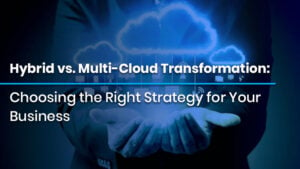Introduction
In an era where digital transformation is paramount, Microsoft 365 stands out as a comprehensive suite of tools designed to enhance productivity and collaboration for businesses of all sizes. Formerly known as Office 365, Microsoft 365 has evolved to integrate a variety of services that cater to communication, collaboration, data management, and business intelligence. With tools like Microsoft Teams, SharePoint, and Power BI, organizations can streamline their operations and improve efficiency. However, with these advancements come significant challenges, particularly in data protection and security. As companies migrate to the cloud and adopt these tools, they must navigate new paradigms in data governance and identity management to ensure their information systems remain secure and efficient.
Unlock Microsoft 365’s full potential with expert guidance from IPSpecialist! Whether you’re navigating a complex migration, implementing robust data protection measures, or optimizing your collaboration tools, IPSpecialist offers a Microsoft 365 certification course that will help to understand these topics. For more details, visit https://ipspecialist.net/.
What is Microsoft 365?
Microsoft has evolved its Office 365 offering, particularly in terms of pricing and features, and continues to offer cloud services to help businesses become more productive. Microsoft 365 is a complete offering that integrates different building blocks to improve collaborative work and data management.
Tools and Services of Microsoft 365
The different tools or services are divided into different usage areas:
-
Microsoft communication tools
The first and best-known Microsoft Exchange integrates Microsoft Exchange Server and Microsoft Outlook. It is an email service and email operating system available on-premise or in the cloud.
Yammer is an enterprise social network that facilitates communication between groups of employees: knowledge sharing, success, top-down communication, community creation, and more.
-
Microsoft collaboration tools
Microsoft Teams, which is becoming the core tool of the suite, has more than 270 Million monthly active users worldwide in 2022 and +330,000 companies use Teams globally.
Teams is a communication and collaboration platform that facilitates exchanges and sharing and organizes remote meetings. The tool is composed of three parts: chat, meeting, and the collaborative groups that are the teams themselves.
OneDrive is a tool for individual storage and occasional sharing using cloud technology.
SharePoint allows you to create websites, intranets, and document storage centers. It facilitates information storage, organization, sharing, and consultation. SharePoint is available on-premise and in the cloud with SharePoint Online.
-
Microsoft Power Platform
Microsoft Power Platform is a set of code-free cloud development solutions. The three main tools are:
Formerly Microsoft Flow, Power Automate allows you to create and automate tasks and processes to facilitate the work of your employees.
This is a business application development service. It is the studio for creating applications with connectors between Microsoft solutions.
Power BI is a business analysis service from Microsoft. It aims to provide interactive visualizations and business intelligence capabilities with an interface simple enough for end users to create their reports and dashboards.
-
Microsoft Entra ID
Entra ID is the directory behind all these tools. It allows IT and administrators to identify, authenticate, and manage data, applications, and users on the company’s internal network.
Administrators benefit from centralized management of users and access, roles and privileges, and centralized control of user configuration. Proper implementation of Microsoft Entra ID security is essential to protect the enterprise from unauthorized access.
The Big Challenges of Microsoft 365
The deployment of the Microsoft 365 suite generates profound changes for IT teams and users with regard to data security. What are the major challenges?
-
Microsoft Cloud Migration: A Paradigm Shift
By migrating to the cloud, IT managers open up their information systems and delegate some of the data management to users, such as information sharing. Until a few years ago, on file servers (on-premise), only a few directories facilitated the sharing of files internally. Today with the acceleration of the cloud and services like SharePoint online, users can easily share information without going through special permissions issued by IT teams. This requires a new model of data governance on Microsoft 365 where the workplace, infrastructure, and security teams must work together.
This migration also impacts identity management, especially with the freedom of internal/external collaboration. It is essential to define a framework and develop the identity management strategy, the levels of authorizations granted (administrator, internal, guests), and the associated security measures (authentication, guest life cycle). Security teams need more visibility into what is happening in the Microsoft 365 environment.
-
Microsoft 365 and Its Uses
Once a base has been defined, the challenge is to master the new uses of Microsoft 365 collaboration tools to ensure data security and integrity. Today, there is a paradigm shift: Users have become the administrators of their shares. Since data management is in the users’ hands, it is important to define rules around usage to clarify what the user can do and when.
A lack of security and awareness can lead to human error and potentially to a data leak. Support for governance and access review concerns both the workplace and security teams.
-
Control Over Data Security
One of the challenges companies are facing is the inflation of access and sharing and the exponential increase in the use of collaboration tools (Microsoft Teams, SharePoint Online). The volume of access logs and configuration objects to be analyzed is colossal.
Therefore, the last issue concerns implementing security measures and tools to process this information and optimize the SOC workload. This will involve implementing security tools for data protection, Microsoft 365 data auditing, detection, data monitoring, and alerting.
Security Services for Microsoft 365
Microsoft offers cloud coverage on core issues related, in particular to identity protection and access management, protection and control of sensitive data, and risk management.
Identity and Access Protection
Microsoft Entra ID provides unified identity and access management for the cloud: identity lifecycle governance, access lifecycle governance (conditional access, Multi-factor authentication – MFA), and secure privileged access for administration.
Protection of Sensitive Data
In order to classify and protect sensitive data, Microsoft has developed a solution called Microsoft Purview Information Protection (formerly Microsoft Information Protection). This tool focuses on identifying and protecting sensitive data on files, groups and emails in the Microsoft 365 suite. In the Premium versions of Purview, the main functionality is the scanner. It allows you to automatically identify and encrypt sensitive data and to track and control access to documents.
Risk Management
Risk management will involve threat detection, verification, and remediation. The Microsoft Purview tool will help detect compromises and identify threats, and eDiscovery will reduce and verify the volume of data to be processed so that the right alerts can be sent to a SIEM.
Protection Based on Microsoft 365 E1, E3 and E5 Licenses
The accessibility of these tools depends on the license levels. The licenses chosen will change the user experience and the security levels granted.
The highest is Microsoft 365 E5, which offers advanced security and analysis tools (Power BI Pro). In general, companies only take on the Microsoft E5 license for VIPs or administrators because the cost is high.
Best Practices for Office 365 Data Protection
While Office 365 offers robust data protection features, organizations must adopt best practices to maximize the security and integrity of their data.
Regular Security Assessments:
Conduct regular security assessments and audits to identify potential vulnerabilities and ensure compliance with security policies.
User Training and Awareness:
Educate employees on the importance of data security and best practices for protecting sensitive information. Regular training can help prevent security incidents caused by human error.
Implement Strong Password Policies:
Enforce strong password policies and encourage the use of password managers to enhance password security. Combining strong passwords with MFA provides an additional layer of protection.
Monitor and Respond to Security Threats:
Use Office 365’s security and compliance tools to monitor for unusual activity and respond promptly to potential security threats. Implementing automated alerts and response actions can help mitigate risks.
Backup and Recovery:
Although Office 365 provides data redundancy and recovery features, implementing a comprehensive backup strategy is essential. Third-party backup solutions can offer additional protection and ensure data availability in the event of accidental deletion or corruption.
Conclusion
As businesses continue to embrace Microsoft 365 for its robust suite of productivity and collaboration tools, the importance of data protection and security cannot be overstated. The migration to cloud services brings numerous advantages but also requires a shift in how organizations manage and secure their data. With users gaining more autonomy over information sharing and collaboration, IT and security teams must collaborate closely to establish effective governance frameworks and security measures. By understanding and addressing the challenges of data governance, access control, and security monitoring, organizations can leverage the full potential of Microsoft 365 while safeguarding their critical data. The journey to a secure, efficient, and collaborative digital workplace is ongoing, and staying vigilant and proactive in data protection practices is key to navigating this dynamic landscape.
FAQs
-
How does Microsoft 365 ensure data security for businesses?
Microsoft 365 employs a range of security measures to protect data, including multi-factor authentication, encryption, and advanced threat protection. Additionally, Microsoft provides tools for data loss prevention, identity, and access management through Microsoft Entra ID, and continuous monitoring to detect and respond to security threats. Administrators can also set policies and controls to manage how data is accessed and shared within the organization.
-
What are the key challenges in migrating to Microsoft 365, and how can they be addressed?
Migrating to Microsoft 365 presents several challenges, including data governance, identity management, and ensuring data security in a cloud environment. To address these challenges, organizations should:
- Develop a comprehensive data governance framework that defines roles, permissions, and data management policies.
- Implement robust identity management strategies, including clear definitions of user roles (e.g., internal users, guests) and security measures like multi-factor authentication.
- Utilize Microsoft’s security tools and services to monitor, audit, and protect data against unauthorized access and potential breaches.
-
How can businesses maintain control over data security in a Microsoft 365 environment?
Maintaining control over data security in Microsoft 365 involves continuous monitoring, regular audits, and the use of advanced security tools. Businesses should:
- Regularly review and update access controls and permissions to ensure they align with current security policies.
- Implement Microsoft security solutions, such as Microsoft Defender for Office 365, to monitor for threats and vulnerabilities.
- Educate employees on best practices for data security to reduce the risk of human error and data leaks.







